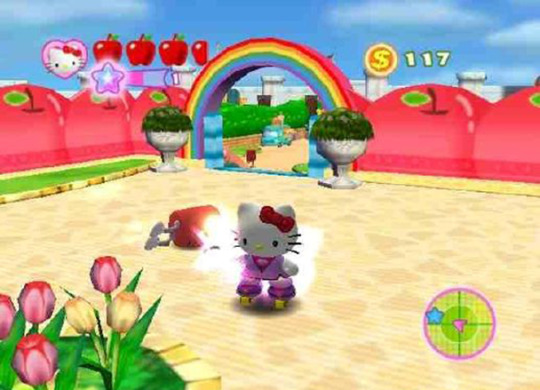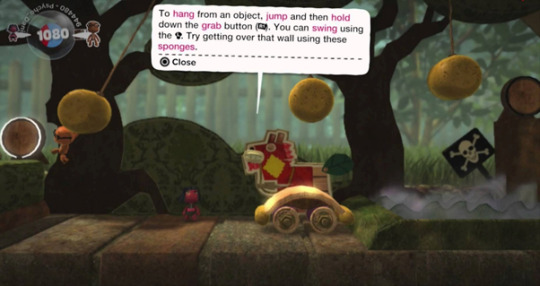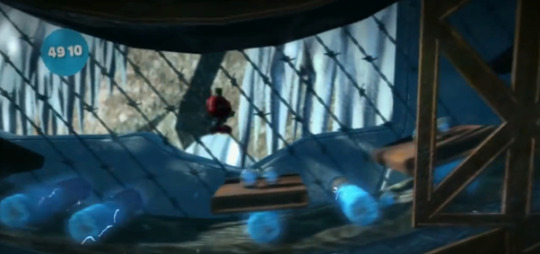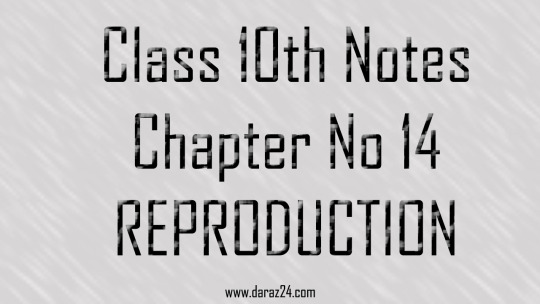#Unit14
Text

Overcome the Fear of Deadline with our Unit 14 Business Intelligence Assignment Help!! Get the best HND Assessment Writing Service and course solution!! Order Instant Solution on WhatsApp: +44 141 628 6080!!
#Unit14 #BusinessIntelligence #AssignmentHelp #Solution #topassignmenthelpservices #UKtopwritingservice #Level5 #Computing #UK #BTEC #HND #HNC #AssessmentHelp #OnlineTutor #AskTutor
0 notes
Text
Trio Logistics Tracking
Enter Trio Logistics Tracking number in web tracking form (Look Below) to track and trace your Courier, Parcel, Consignment, Shipping and Get Real time delivery status details quickly.
TRACK
Trio Logistics Ltd Customer Service :-
Hotline Phone number: 01420 543059Email ID: [email protected] Office Address: Unit14, Caker Stream Road,Alton,Hampshire,GU34 2QF
View On WordPress
0 notes
Photo

#unit14 #bartlettschoolofarchitecture #bartlettsummershow2019 #startarchitects #architecture_hunter #next_top_architects #designboom #dezeen #architizer #superarchitects #archilovers #architecturemodel #architecturedose #architecture_view #architecturestudent #critday #iarchitectures #arquitectura #arquitetapage #archilovers #arc_only #sky_high_architecture #arcfly #arquisemteta #archilife #architecturefactor #arch_impressive #architects_need #archdaily (at Bartlett School of Architecture UCL) https://www.instagram.com/p/BzBvJI5pxAW/?igshid=ju1tbmxypw0r
#unit14#bartlettschoolofarchitecture#bartlettsummershow2019#startarchitects#architecture_hunter#next_top_architects#designboom#dezeen#architizer#superarchitects#archilovers#architecturemodel#architecturedose#architecture_view#architecturestudent#critday#iarchitectures#arquitectura#arquitetapage#arc_only#sky_high_architecture#arcfly#arquisemteta#archilife#architecturefactor#arch_impressive#architects_need#archdaily
2 notes
·
View notes
Text
Mijn nieuwe salontafels van Unit14
Mijn nieuwe salontafels van Unit14
Ik ben al een paar weken bezig met een update van ons interieur. Al eerder schreef ik over de nood aan die update, en hoe het komt dat het nog steeds niet is hoe ik het wil. Vandaag stel ik je de eerste verandering voor: de nieuwe salontafel!
Continue reading

View On WordPress
0 notes
Text
IDSN - 540: Unit 14 | Process Journal - Evaluation
Reflect on the methods and techniques that are most appropriate for evaluating the performance of your groups implementation and summarize those thoughts in a new post in your process journal. How do you assess the outcome of the various phases of the creative problem solving process that your project has gone through? Create a post for your blog
Google docs really helped our team. We really saw an evolution of our work throughout the semester. Even our deck 2 weeks ago verses what we just finished working on is crazy. There’s definitely evolution and growth as a team.
It’s nice when Aaron gives us time during class after presenting to work with each other. Our team uses that time to debrief feedback that is fresh on our minds and we evaluate what we need to focus on. The areas with the most critic are naturally areas that we focus on improvement the most. We tend to iterate and iterate until we are satisfied with our product.
I also noticed that when we first started, there was no clear role within the team and we didn’t use the time we had as efficiently as we could’ve. There were some assignments that could have been divided and done on our own, but as we got more comfortable communicating with each other and trusting each other we started to delegate tasks and assignments based on our strengths/interests.
I think we did very well through the phases of our creative problem solving process overall. It was a bit choppy at first, but started streamlining as we got use to the work and each other. This is exactly like the idea of iteration anyway, you continue to do it until it get’s better. I feel like each week and each meeting we have with our team the better and more efficient they become. We become better at problem solving and knowing what creative problem solving suits our team best.
0 notes
Video
#MakeMaftownGreatAgain New show presents Earth Kwake. Directed by @rea_modisane @sugarpixels_ D 4 $ #D4S #Dreams4Sale #DreamsellersTV #Video #album #music #artist #Unit14 coming soon 😄🎞📽🎥🎧🎼 https://www.instagram.com/p/B0Vuh9UjfQe/?igshid=bfeq5cyvxqgc
0 notes
Text
My History of Games
I’ve been playing video games since my older brother got the PlayStation 1 for Christmas. I remember waiting impatiently for my turn to play Crash Bandicoot and later on being amazed that we could both play Star Wars: Battlefront together at the same time! For this I’ve made a small timeline of a few games I felt have had the biggest influence on my relationship with gaming and I’ve chosen a select few to talk about.

I’ll talk about my introduction to gaming with linear games and then focus on MMORPG’s as I’ve put the most playtime into them and out of all games it tends to be online games that I find myself drawn to.
After being introduced to the PlayStation I spent the first few years of my gaming history sticking to consoles as PC Gaming wasn’t something I knew about. I went from the PS1 to the PS2 and was finally old enough to spend my own pocket money and choose my own games. I went to Blockbusters and I had enough to pick out two games for myself. I picked out the two games which cover art caught my eye the most. I was still quite young so the bright colours and characters was my main focus instead of actual gameplay. This included Gregory Horror Show (2003) and Hello Kitty: Roller Rescue (2005).

They were both colourful linear games which were perfect for a young child like I was. Both games although very different settings both contain bright colourful characters and very direct linear gameplay. For a young child it’s important to make it obvious what their objective is as for example throwing a 6-year-old into “The Witcher” will most likely lead them to aimlessly wondering the huge nonlinear open world, getting lost and eventually getting frustrated and bored with the game. Young children have shorter attention spans and so the developers need to design level layouts, HUD and objectives to be simpler than games for older audiences.
Linear games are a great choice for younger audiences as they provide a strict path which they complete in stages. The player moves from “Stage 1” to “Stage 2” which leaves no room for confusion on how they should advance but also provides a nice way for children to see their progression and feel rewarded to see how much they’ve done. Making the accomplishments of the player visible and obvious is great for keeping them interested. By filling linear games with interesting zones, puzzles, creative mechanics and boss fights you’ll still be able to create an enjoyable experience for the player even if you’re railroading them on a specific path.

A good example of this is in “Hello Kitty: Roller Rescue” As it was a 3+ age rating there’s a big difference in the design and flow of the game even compared to “Gregory Horror Show” which is a 12+.
The HUD shows four different displays. The apples represent the players Health, the star bar shows the charge until Hello Kitty can do a larger magic attack, the amount of currency you’ve collected and a simple mini map which simply shows which direction you need to go in. You can even see from the screenshot how the obstacles of the fences and archway guide the player in the right direction. The developers have really clearly focused on making it so any child could pick up the controller and instinctually know what way they should go by the placement of enemies, obstacles and items.
This was the first game I ever completed by myself and it felt like a proper achievement to little 6-year-old me as I could go back on the main menu and look through the different stages that I’ve completed. This game gave me the skills I needed to eventually get into more complex games. I enjoyed the simple “save the world” story and felt invested in saving the different characters you can recruit onto your team. The main thing I appreciated was the clarity on what areas were accessible and which were simply part of the background environment. Invisible walls have gained a little bit of infamy for being annoying and immersion breaking but if the level design is done correctly than the player should instinctually know which areas are out of bounds.
This is still just as important for nonlinear games too. For example, players should be able to tell what objects in the world will block bullets such as a wall but long grass or a glass window wouldn’t. The fantasy violence in Hello Kitty was very simple “whack” the enemies with your toy hammer and you’d eventually defeat (not kill) them. It was though in boss fights I was introduced to the idea of timing and anticipating the attacks. Whether it’s by watching the Boss’s rotation or failing the mission and having to restart you become familiar with how their attacks work.

Want to avoid the lasers? You have to either make use of your jump or quickly take cover behind a brick wall. I found this boss fight very difficult at first as it was my first game moving in an open 3D space whilst also being chased by a large boss.
Even at 6 years old I could immediately tell this character was different to other enemies. He had his own introduction, theme song and health bar which clearly warns the player that this will require different tactics than mindlessly slashing mobs.
The way of dealing with this boss was by throwing back his bombs at him. The green bombs have clear numbers counting down to their detonation. This is to directly tell the player how long they have to throw or avoid the bomb before it explodes dealing damage. In more advanced games such as “Call of Duty” grenades and other explosives would rarely have a visible countdown. Games striving for realism also trust their older audiences to get a feel for the timing. The developers for Hello Kitty however understand they’re creating a 3+ game and so realism is not their highest priority but instead they want to provide a fun unique boss battle that can be completed by young players.
This is how the game continues on. New mechanics are introduced slowly through each stage. Different enemies, attacks and traps which the player learns to counter and avoid. By the end stage of the game there’s normally a mixture of previous challenges where the player has to use the knowledge and skill they’ve developed to pass the final level.
An example of this I noticed myself was when I was playing through Little Big Planet (Media Molecule, 2008)

During the very first levels you are introduced to grabbing and pulling objects. Swinging and using motion to make larger jumps and also collecting items. This basically makes the first three levels a larger tutorial that also connects with the main story. I personally really like this as it doesn’t feel like you’re stuck in a tutorial before you can get started but instead you’re progressing the story whilst also learning the mechanics which I think is how games should be designed. Especially when the game is linear and has a set path so it’s only really one path for the developers to focus on perfecting. By the final stage of the first level the players are avoiding hazards, grabbing onto moving platforms and using jumps to avoid traps.
The level clearly gives the players time to get used to the controls and feel of the character’s hitbox before throwing more complex puzzles and obstacles. In this image you can see the player is free to swing along the three hanging sponges to jump over the hazard. They have no time limit and also there’s plenty of safe ground for the player to fall and retry.

The way jumping works in Little Big Planet is there are three different jumps. By tapping the “X” quickly you make a small hop. By holding it briefly you make a larger jump and by holding it down until landing you make a huge leap. This is also affected by the directional controls of the analog stick. This is why the beginning level designs have a high focus on giving the player lots of time to experiment with different jumps as in later levels you won’t have the time to think before each jump but instead have to rely on muscle memory.

Now let’s look at the second to last level “The Bunker”. This environment is much harsher as the player is jumping to avoid electrified hazards whilst leaping across different platforms. This is also all happening in a large rotating room so the player is also being forcefully moved left as they attempt to make difficult jumps. I died and restarted this level so many times. Little Big Planet also rewards the players with unique items if they “Ace” a level. This means to complete the level without dying a single time. This is the hardest level in the game in my opinion not only because it’s requiring you to use precise timing but also because the way the platform is rotating means you can easily overextend jumps and slide into electrified hazards.
I think game developers need to make a choice when creating a game whether they want to the player to be directly told the controls and mechanics (common in games for younger children) or the player to be left to learn themselves (common in more realistic modern games). If you don’t want to break the fourth wall with in game characters explaining the controls like in Little Big Planet, you could instead opt to having windows or in game messages pop up.

(Screenshot from The Elder Scrolls IV: Oblivion, Bethesda Softworks 2006)
An example is some games like Oblivion (Bethesda, 2006) where expect some small hints on how to move the majority of the controls are left hidden behind a menu. Some players however might find this immersion breaking especially if the pop ups pause the game or interrupt gameplay. This all however depends on what flow the developer is trying to create and whether they want the initial introduction to the games mechanics to be separate or to blend seamlessly into the actual game.
As I grew older I became more aware of how other people viewed gaming and the “gamer” community. Initially growing up I was unaware there was even a gaming community at all. How could people form connections when the majority of us were playing alone in our rooms? It wasn’t until the PlayStation 3 came out I was introduced to my first online multiplayer games. Finally, my friends and I could play with each other without having to be in the same room! It opened up a whole new world as we could unlock items, complete multiplayer puzzles and defeat bosses then see each other the next day at school. I know that gaming strengthened my connections with real life friends as we spend more time together, had an endless amount of inside jokes and felt an actual achievement when we finally aced a difficult level.
It was common during the weekends or summers to be kicked out of the house by my parents to spend “time away from that damn PlayStation”. My friends and I would instead meet up and play outside although the majority of our conversations revolved around what we should build or play next.
There’s a lot of speculation on whether gaming has a damaging effect on children. Some people theorize it leads to them being unable to form real life connections. Whether it’s because they’re inept in social situations or simply too apathetic to bother.
A study done by Dr Jesus Pujol (Video Gaming in school children: How much is enough? Annals of Neurology, 2016) Recommends that 2 hours a week is the correct amount for children and any more will hinder their development. I find this a very limiting amount of time as 2 hours is something I easily pass a day never mind an entire week. Majority of modern games also require many hours to practice, build and master your character or abilities. A single match in Smite (Hi-Rez Studious, 2014) for example can easily pass 40 minutes. 2 hours for the majority of gamers is simply not enough time even more so when their friends are online waiting to play with them.
Would you rather a child sits alone watching TV after school or sit and play either in person or online with their friends? What’s the most social option? We view parents who limit their child’s TV time as old fashioned but why don’t we have the same views on video games? For some reason people are happy to let others watch TV for hours but the moment you put down the remote and pick up a controller you’re suddenly viewed as being anti-social.
I think this relates to how quickly the video game industry has changed in recent years and how for most older people it’s not an activity they’re used to. Whilst on the other hand television and other medias have been widespread for longer. My Dad for example only came across video games in the rare arcade. For a child growing up in the 80s there was a huge limit to his access to video games. How can someone understand or appreciate a media when the closest form was an arcade he didn’t have the pocket money to go to or the even rarer home video game system.
The first home video game console my Dad ever saw was the
Nintendo 64 (Nintendo, 1997).
By this point in his life he had two children, a wife and a career that took him abroad for months at a time.
You can say he had missed his window to properly discover gaming but for my brother and I we were just growing up during the late 90s early 2000s when video games became common in the household. We had the opportunity for gaming to become a hobby and eventually part of our daily routine. I moved from consoles to PC Gaming when I received my first laptop from my Dad in 2007, This also came with my brother and I sharing our first World of Warcraft (Blizzard Entertainment, 2004) account.
I love MMORPGs. They’re hands down my favourite form of games and have always been a focus of mine since I made my first Warcraft character almost 10 years ago. I love multiplayer functions and how they promote playing with others so loading into a fantasy world completely populated by other players completely blew my mind.
World of Warcraft (like most other MMORPGs) requires commitment and cooperation amongst the players. As you explore the world and complete quests you’ll find others just like yourself in the same area. The game allows people to join each other’s party, send messages and even trade items. Different zones of the games even have their own chat channels so you can talk to any players in the area even if they’re not in your immediate proximity. Different challenging activities such as Dungeons or PVP require groups to complete. Rewards scale up so more experience, stronger items and gold can be found from defeating stronger bosses.
A feature I love about MMORPGs is the ability to create your very own character that’s personal to you. The majority of character creation in MMOs follow the same structure of choosing a race and class. This determines your appearance, animations, voice lines and then your skills and role in combat. By giving people the ability to create their own character instead of playing a premade one it already immerses players. By making them feel immersed and invested in the world people are more likely to stay subscribed and continue playing the game.
The goal for any developer is to create a successful video game that people will enjoy and to potentially be successful enough to create sequels or other projects. However, with MMOs they are maintaining a persistent online world which requires funds to do so. Keeping players subscribed not only gives Blizzard Entertainment the ability to maintain World of Warcraft but also create additional content to sell as expansions.
The expansions not only add new classes, races and features but also expand on the overarching story of the world. This encourages players to not only create new characters but also continue building up their already existing ones and fight the challenging new monsters that have been added. Whether you’re a hard-core raider who organises weekly guild runs or a casual who unwinds by completing few quests there’s always something for you to do. What attracts me so much about MMOs in particular World of Warcraft is through the story design and mechanics you feel like you truly have a place in the world. The achievement you feel is real and the developers keep this in mind when designing the game.
Through continuous scoring and feedback players can immediately see how well they’re doing. Whether it’s through item level, damage done or how far they’ve progressed in the story it’s incredibly easy for players to see how much they’ve advanced. People like to feel appreciated and good about themselves and so when you level up and a huge golden light explodes out of your avatar you can’t help but feel a wave of satisfaction. It’s easy to see why people get addicted. There’s a compulsive need to keep “pulling that lever” and watch the rewards roll in. Even if the items are virtual they require time and effort and so to the player has value. This is why so many people on the outside looking in can’t understand why people care so much and put so much money and time into the game. In a recent interview discussing new armour upgrade system in the new expansion, Ion Hazzikostas the current game director of World of Warcraft says the following;
“This is really building upon a lot of the lessons we learned from the Artifact system in Legion. There's a lot of value in a universal reward, a universal progression goal, whether you're questing, doing a dungeon, helping a friend out with something, feeling like no matter what you did you log off at the end of the night a little bit closer to some tangible goal rather than depending purely on some lucky drop. “
Developers are gamers too and they understand what people need to feel invested.
A concern many have is that gamers can neglect other activities to create more time for the game. I have countless examples of ways I do this personally. I’ve neglected sleep to stay up longer to role-play and chat with online friends from all over the world. I’ve woken up in the early hours of the morning to get some playtime in before heading to college or work. I can honestly say gaming with a focus on MMORPGs have changed my behaviour and how I plan out my day. I agree there are disadvantages but also many benefits. My reading and writing skills shot up and I discovered a love for lore. I spent hours buying books and graphic novels and wrote many short stories. My art skills have improved from drawing characters which eventually influenced my decisions for what I’d focus on in high school.
I’m not an extrovert. I’m not comfortable with new people and don’t enjoy “putting myself out there.” I know without online gaming the majority of my free time would instead have been spent isolated at home. I understand how some might view the way Blizzard market their games to appeal and even reward addictive playing as despicable but I don’t believe it’s done out of any malicious intentions. It’s the real world and if a company can see that something is working and bringing in money then they’re going to use it. Online gaming gives instant gratification and rewards whilst placing the player in the centre of the story and making them feel like the hero. There’s a market for it because it receives such a massive response! In 2010 during Wrath of the Lich King (Blizzard Entertainment) the subscriber count peaked just above 12 million! Although Subscriber count varies with difference levels of success with each expansion, World of Warcraft still holds itself as one of the largest active MMOs to this date. I believe that’s because of the amount of effort and love put into the world’s rich story. Gamers read the books and graphic novels. They buy the merchandise, Cosplay their favourite characters and see the movies. Immersing yourself in a fantasy world is not a new concept. People enjoy being passionate, just look at the fan bases for brands such as Lord of the Rings or Star Wars. Even these pop culture giants attempted to get into the online gaming scene with the release of The Lord of the Rings Online (Turbine, 2007) and Star Wars: The Old Republic (BioWare Austin, 2011). Although less successful they still boast a large player base and are still active to this day. It goes to show gamers can’t get enough of these universes and MMORPGs are not going anywhere.
Interestingly a concern people have for MMORPGs is that they’re not sustainable. As technology advances, Video games are constantly being run on more powerful engines. Things that were not feasible say five years ago are completely possible nowadays. So how exactly can an MMO that has been active since 2004 still be popular now? Regardless of the constant patches, expansions and reworks it still is the same game. This just goes to how attached gamers get and how a strong setting and story keeps the attention of millions of players even if there are newer shiny games with better combat mechanics.
Some reworks and updates I feel are Blizzard’s strongest is their Battlenet system. Adding other players as friends is not a new concept. Back in 2004 you could add a character as a friend and see if they were online when you were playing. This was limited to that one character and only on the character you sent the invite from. They then updated the system to allow you to add an account as a friend and see if they were playing a character of the same faction. Blizzard quickly realized that why create an MMO if there were some people still treating it like a single player game? As a single player game it loses all the features that make it special. How could they make it easier for players to form and maintain friendships online? For most players it’s their friends that convince them to try out a new game or to return and resubscribe.
With the Battlenet (or Battle.net) system you can check, message and invite any of your friends regardless of what character, faction and even game they’re playing!

Here I can check to see who is online and change my plans accordingly. Instead of playing alone why don’t I invite “Aerith” to run a dungeon as we’re the same level and I need a healer. My other friend is playing Overwatch so I could instead jump into a few matches with him before returning to Warcraft.
By putting a focus on the social features of a game, developers will see their player base form online friendships that last years. We’re naturally social animals and so it makes sense we’d enjoy playing together rather than alone. Just like back in the days of good old split screen or simply taking turns playing whenever someone died. For some like myself sitting in the same living room with your friends is not an option. Whether it’s distance, money or time it’s not always possible. However, I speak and play with my friends almost every single day. Whether it’s through discord, skype or just normal text chat, I’m always able to connect and play which in my opinion makes gaming much more enjoyable.
The reason I love gaming and continue to make it my passion is because of the people you meet. Any activity can be done socially and developers giving players the tools to do this is what makes a strong community. Some games you can even directly share your achievements to your social media! For example, the popular free game Town of Salem (BlankMediaGames, 2014) rewards you with in game currency for sharing your victory’s on Facebook. This allows you to involve your friends whilst also indirectly promoting the game. As gaming becomes more mainstream and common this is a feature we’re only going to see more of.
I’m definitely influenced by the games I played whilst growing up. As someone learning to create my own games I want to focus on smooth seamless learning curves through level design like Little Big Planet. I want players to fall in love with a huge detailed world and create their own characters and stories like in World of Warcraft. I want them to be able to do all of this whilst playing with friends and being rewarded for it.
0 notes
Text
~Unit 14~ Research via the Internet
This semester I was also in research methods for psychology, so I have learned all about different ways of conducting research, so this unit really was able to reiterate a lot of the information that I have already gone through.
One of the research methods that we focused on during this unit was the use of a survey. These can be made and completed online through different programs, but there are certain instructions that should be used to insure that the survey is getting accurate results.
First, I did not know that providing instructions in the survey should be included. Even though I may understand the format of the survey, someone else may not, therefore it is very important to include them. Second, I learned that you should only ask questions that can be answered by the subjects. This includes questions like asking how much money they spent on a certain thing in one year, it may be hard for some people to remember that information and answer accurately. Third, I did not know that to get a person’s opinion on something you should use a rating rather than a ranking. This is because a ranking makes the participant compare choices rather than say directly how they feel about something. Fourth, I did not know that it is necessary to code for themes. This makes it easier then when analyzing the results so that questions can be grouped together and studied. Fifth, I was not aware that Excel is a good place to analyze results. I had been using SPSS for any type of statistical analysis in my psychology and statistics classes.
Knowing all these things provided a good framework for when I had to create my own survey about people’s thoughts about surveys that are conducted online. I decided to make mine through the website Qualtrics as I have used this before to conduct my own surveys and I know other people are familiar with this as well so it would be a good idea to use it. I used a convenience sample and I collected my family and friends to complete the survey for me and I was able to find some pretty interesting results! There was one question that was open ended, meaning that they could answer the question with their own words and not a response that I had given options for, and it was interesting to go through the answers. I had asked why they might think that providing information online may yield more accurate and honest responses and everyone had pretty similar answers. Most people decided that they would be more honest online than in person in a survey because there’s more anonymity and less judgment from doing it online. It was interesting to see that everyone was pretty much in agreement about this.
One other thing we learned in this unit was how the Internet is changing how restaurants and hospitals are ran. They are starting to track Internet usage and what people are searching for to use as data for food poisoning or influenza like symptoms. It has been found that when people are searching symptoms and accessing websites that explain certain symptoms, there is a larger influx of people going to the hospital to get treated for things like influenza. This information is really useful because now hospitals can track this information and be prepared for the amount of people that may be coming in to be treated. I hadn’t thought about hospitals actually using this information but it is really useful; I know that whenever I have a weird sickness I usually search my symptoms to see what it might be.
0 notes
Text
Class 10th Notes Chapter 14 Reproduction
Class 10th Notes Chapter 14 Reproduction
Class 10th Notes Chapter 14 Reproduction
Class 10th Notes Chapter 14 Reproduction. Class10th Biology shams note Chapter 14 Biology Chapter 14 Reproduction Exercise Question MCQs, Long question, short question, and additional multiple-choice questions. Chapter number 14 biology notes pdf scan document download.
Class 10th Notes Chapter 14 Reproduction
UNIT14 REPRODUCTION
SHORT QUESTION…

View On WordPress
0 notes
Text

Get the best tutor for Unit 14 Strategic Supply Chain Management and Logistics Assignment Help and Solution, Avail Best Diploma Assessment Help Service!! Order Instant Solution at +44 141 628 6080!!
#Unit14 #StrategicSupplyChainManagement #Logistics #AssignmentHelp #Solution #Edexcel #BTEC #topassignmenthelpservices #UKtopwritingservice #Level7 #Leadership #UK #HND #HNC #OnlineTutor #AssessmentWritingService
0 notes
Video
youtube
TN Samacheer New syllabus XI Accountancy / #Unit14 / #ComputerisedAccoun...
0 notes
Link
حصة Unit10 إلى Unit14 العام 2ND الإعدادية Term.doc 2 - 1 MB

هذا هو رابط تحميل مذكرة الصف الثانى الاعدادى الفصل الدراسى الثانى2019 تغنى غن كل المذكراتمن الوحدة العاشرة الى الوحدة الرابعة عشر
0 notes
Text
Unit14-Reflection
Hello my classmate.I am really sory because prep school is ending probably this is my last reflection.Firstly unit 14 was diffucult for me because first grammer was compliceted for me but I am trying to understand.Second grammer was easy and useful for really life I liked it by thr way we learned new vocab for example film composer newscaster sitcom and editorial director.Thank you for everything Rosie 😘
1 note
·
View note
Photo

Prices for the weekend. We are based in Unit 14. #Dreamsellers 😋😎🔥🔥🍟🥪🌭🍔🍗🍳 (at Unit14, Mmabatho, Mafikeng) https://www.instagram.com/p/B3d1CAvD1cd/?igshid=ko0mpsx0geym
0 notes